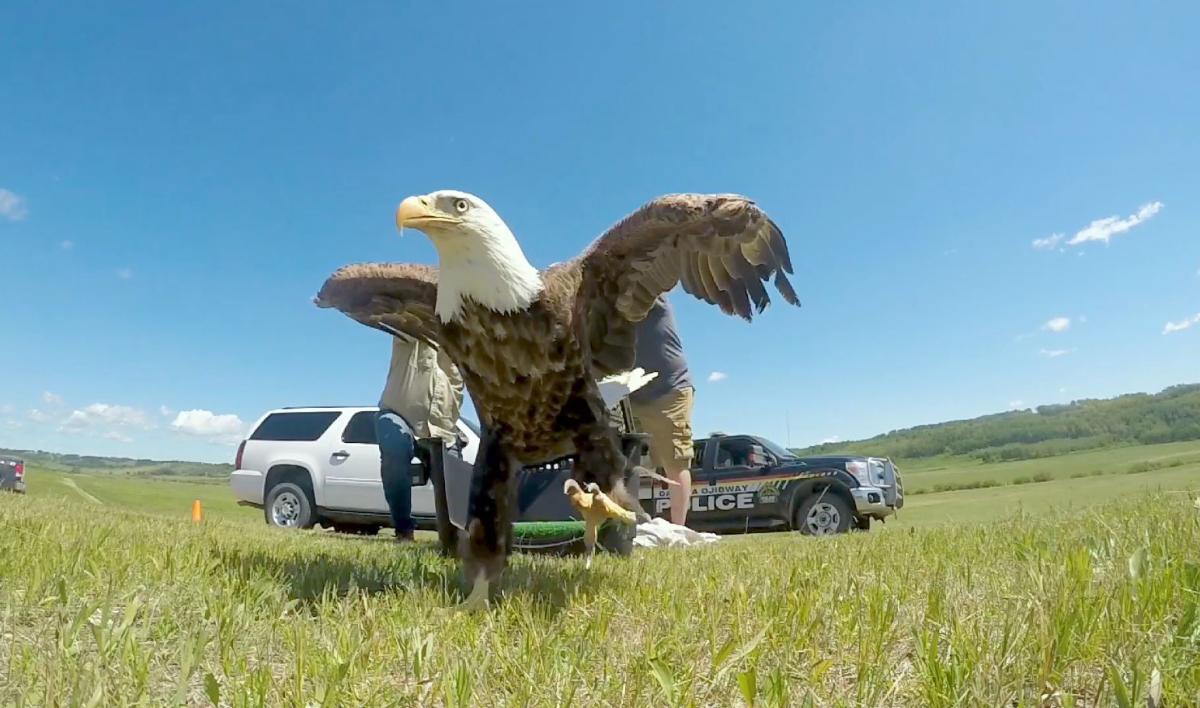Injured Bald Eagle Takes Flight Again in Manitoba
Bird takes long ride with TransCanada to Waywayseecapo First Nation

Injured bald eagle takes flight again in Manitoba
The bald eagle doesn't have a name.
He came to Manitoba's Wildlife Haven in June, weak and unable to fly well. As a patient at the rehabilitation centre, he wasn't given a moniker because he was heading back into the wild once he was healthy again.
And during his recovery and eventual release, that nameless bird touched the hearts of dozens of people – at Wildlife Haven, at TransCanada, and on the Waywayseecappo First Nation.
Hitching a ride
Wildlife Haven, located in Île des Chênes near Winnipeg, has cared for more than 35,000 wildlife since it was founded 1984. Its mission is to rehabilitate orphaned, sick or injured wildlife – like this bald eagle – for their return to the wild.
The bird was rescued from Roblin, Man. – more than 400 km northwest of Wildlife Haven.
"Normally, we try to release animals back to the original areas [where they were found] if we can," said animal care coordinator Tiffany Lui.
Enter TransCanada's Steve Loney. After getting permission from a company leader to borrow a truck, the Indigenous and community relations liaison drove out to Wildlife Haven on a recent day off to pick up a very special passenger.
The destination? Waywayseecappo First Nation near Roblin – a four-hour drive away.
"Waywayseecappo is right along the edge of the Birdtail Valley which is sort of the natural highway for these birds of prey," Loney explained.
The sacred meaning of the bald eagle to the First Nation community made the destination a fitting one.
Because the animal flies higher than any other bird, it's believed the bald eagle can see everything – much like the Creator does.
A 'breathtaking' experience
About 40 members of the Waywayseecappo First Nation gathered to witness the first flight of the recovered bald eagle.
Once his enclosure opened, the eagle took a few steps forward and flapped his powerful wings, and disappeared into the sky.
It was humbling to witness, said Sgt. Dale McKay with the Dakota Ojibway Police Service.
"I thought this was a very fitting location within the First Nation just feeling the power of the eagle flapping his wings and actually taking off," McKay said. "No words can describe that."
"It was probably a highlight of my career to share that type of an experience with a First Nations community with such a sacred animal that's so symbolic," Loney reflected. "It was breathtaking."
Meaningful partnerships
With one full-time employee and a small army of volunteers, Wildlife Haven is a "small but mighty" organization, said Loney.
And it's one TransCanada has been proud to support for more than 20 years, after a land agent spotted an owl on the shoulder of a volunteer in the 1990s and became engaged with the organization. In 2013, we provided Wildlife Haven with a 50-year donation of 18 acres (7.3 hectares) of land next to the Canadian Mainline for its new expanded location, set to open later this year. Overall, the partnership is set to span more than 70 years.
The company also helped Wildlife Haven kick off its $2.5 million capital fundraising campaign with a donation of $500,000 in 2014.
Wildlife Haven has raised more than $1.9 million for the permanent, 9600-square-feet wildlife hospital and education centre, and hopes to open the hospital this fall.

